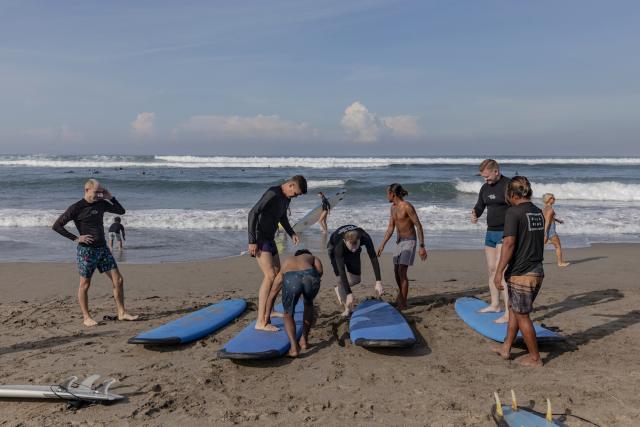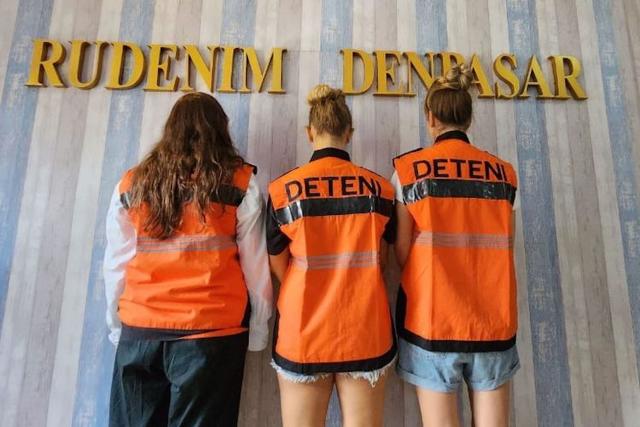Not quite a decade ago, just after I had published a book called Bali Heaven and Hell, a cultural history of the island with particular reference to the surfer-led tourism explosion over the past 40 years, I was contacted at our Pererenan villa by two Russian gentlemen who wanted to take me to lunch at the uber-trendy Deus Temple of Enthusiasm.
They explained that they wanted to interview me about the book, but more specifically about the history of surfing in Bali, for an article which would be published in a Russian language magazine to be distributed across the island but also in all the enclaves of the rising Russian middle class.
Not believing that they were serious, I went along to the lunch expecting to be amused, but left in shock.
These guys appeared cashed up and dead serious. Their goal was simple: to buy up the beach clubs and surf schools and fill them with Russia’s nouveau riche. The article duly appeared in a lavish publication full of ads for expensive jewellery, cosmetics and Botox clinics. I don’t know if it helped sell my books but it allowed me to carbon-date the start of the Russian invasion.
In fact, Russian criminal elements had been in Bali for decades, as they have in other tourism hotspots like Goa, Ibiza and the Thai islands.
As early as the 1980s, the surf community on Bali’s Bukit peninsula was rife with rumours that black Russian money was behind Tommy Suharto’s rapid expansion of tourism development along the barren cliffs that now house many of the island’s most exclusive resorts.
But it was a slow burn.
Russians didn’t surf, so for normal punters they didn’t exist.
Over the last decade all that has changed. As my luncheon companions predicted, if you build it, they will come. And while the dodgy Russian money didn’t stop at taking control of beach clubs and surf schools, it remains where it is most visible.
Walk along the black sand of Canggu or Seminyak and you will see them everywhere, one half of them teaching the other half how to surf in the crunching low tide waves, perhaps with a couple of Balinese instructors in the mix for the look, but mostly not.
In fact there is increasing hostility between the locally-owned businesses and the illegal others.
Venture into a trendy beachfront club and you will see the beautiful people spread over loungers sipping cocktails, slip into a rowdy sports bar a few hours later and you’ll find shirtless young men pouring beers over each other’s heads and making a lot of noise in Russian.
All of which can be construed as good clean fun, kids will be kids etc, and let’s not forget that before the Russians, Australia led the way in obnoxious behaviour on the Island of the Gods. But it’s often ugly and it’s almost everywhere. And the locals have had enough.
The numbers of monthly tourist visa applications had risen steadily over the years leading up to Covid, but during the pandemic lockdowns the extent of the Russian resident population (legal and illegal) became apparent.
The start of the war in Ukraine in early 2022 began another chapter.
While nearly 60,000 Russians arrived in Bali last year, since the Kremlin declared a partial mobilisation of military reservists in September, arrivals doubled to around 20,000 a month, according to figures compiled by Bali’s Ngurah Rai international airport.
But every cloud has a silver lining, and having been second only to Australia on arrivals statistics for many months, Russia dipped down to number five in the latest figures available, to end of March.
On the other hand, Russia held onto its commanding lead in the deportation charts, with 14 of 40 people deported between 1 January and 2 April, according to the Ngurah Rai immigration office.
Two Australians, three Brits and three Americans also featured on the list. While most of the offenders were visa overstays of more than 60 days, Russia’s 14 included three women accused of being sex workers, two others for conducting illegal businesses, a woman for taking nude photos and a man for being “half-naked” at the sacred Besakih temple. And while their numbers may have dropped off slightly, the Russians kept up the bad work last month with a man and two women kicked out for “posing disrespectfully” at Pengubengan Temple on Mount Agung.
An interesting sidebar to this is that while Ukrainian arrivals have also surged since the start of the war, they have yet to figure on the deportation charts. Some have even bonded with the enemy in anti-war protests in Bali. Which is not to suggest that all has been forgotten.
In March Bali Governor Wayan Koster said he had asked the central government in Jakarta to end visa-on-arrival privileges for citizens of Russia and Ukraine amid growing complaints from locals.
“These two are at war, so it is unsafe in their country, and they flock to Bali,” Koster was quoted as saying in Al Jazeera.
“Many of them come to Bali, not for leisure, but to find comfort, including for work.”
In Bali this week, the Balinese manager of a large eco-development told Noosa Today that, not considering the political ramifications, he had sold a Russian and a Ukrainian garden villas next door to each other.
When they found out, a long and animated discussion ensued and neither sale went through.








